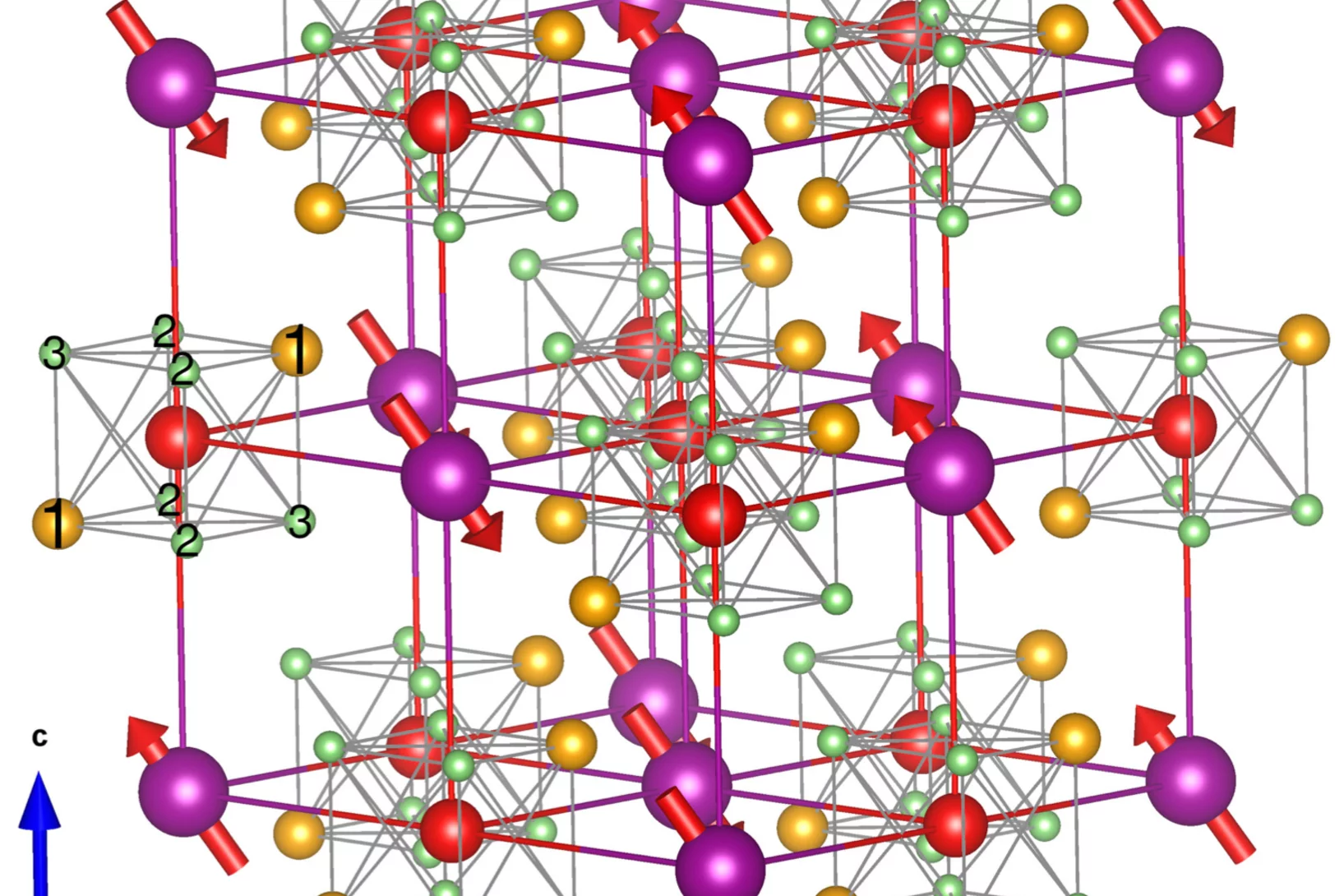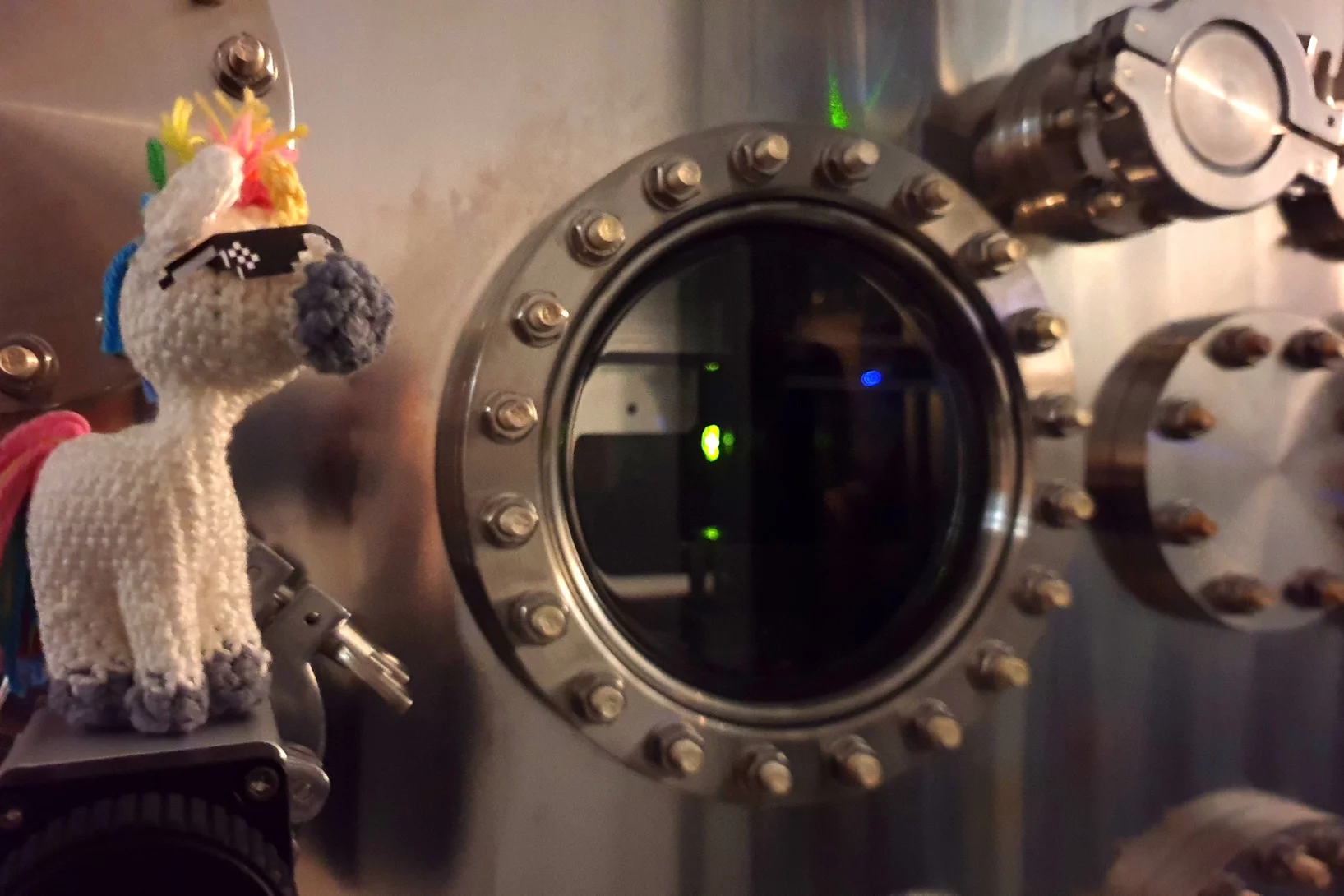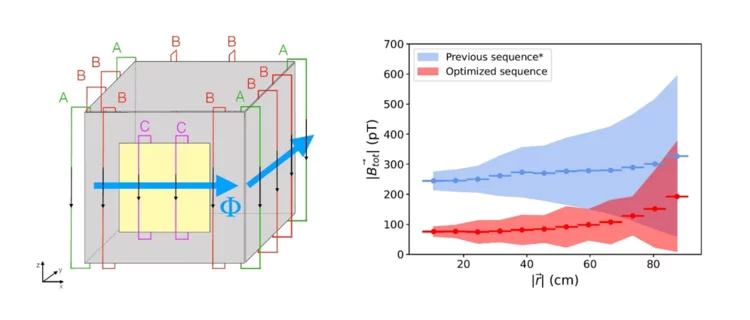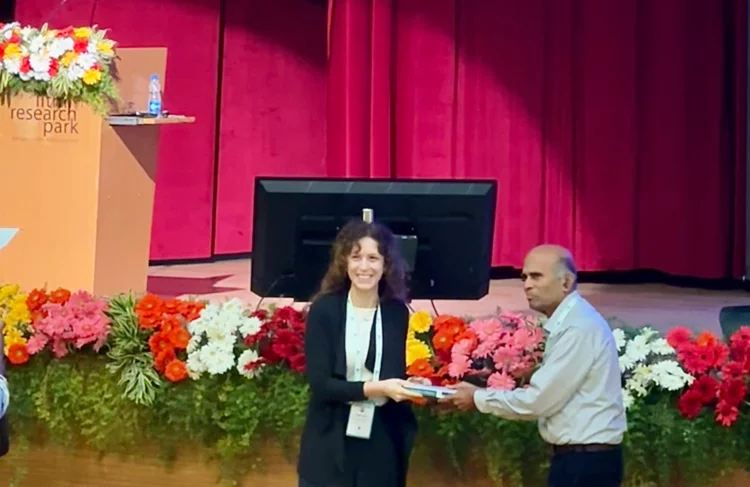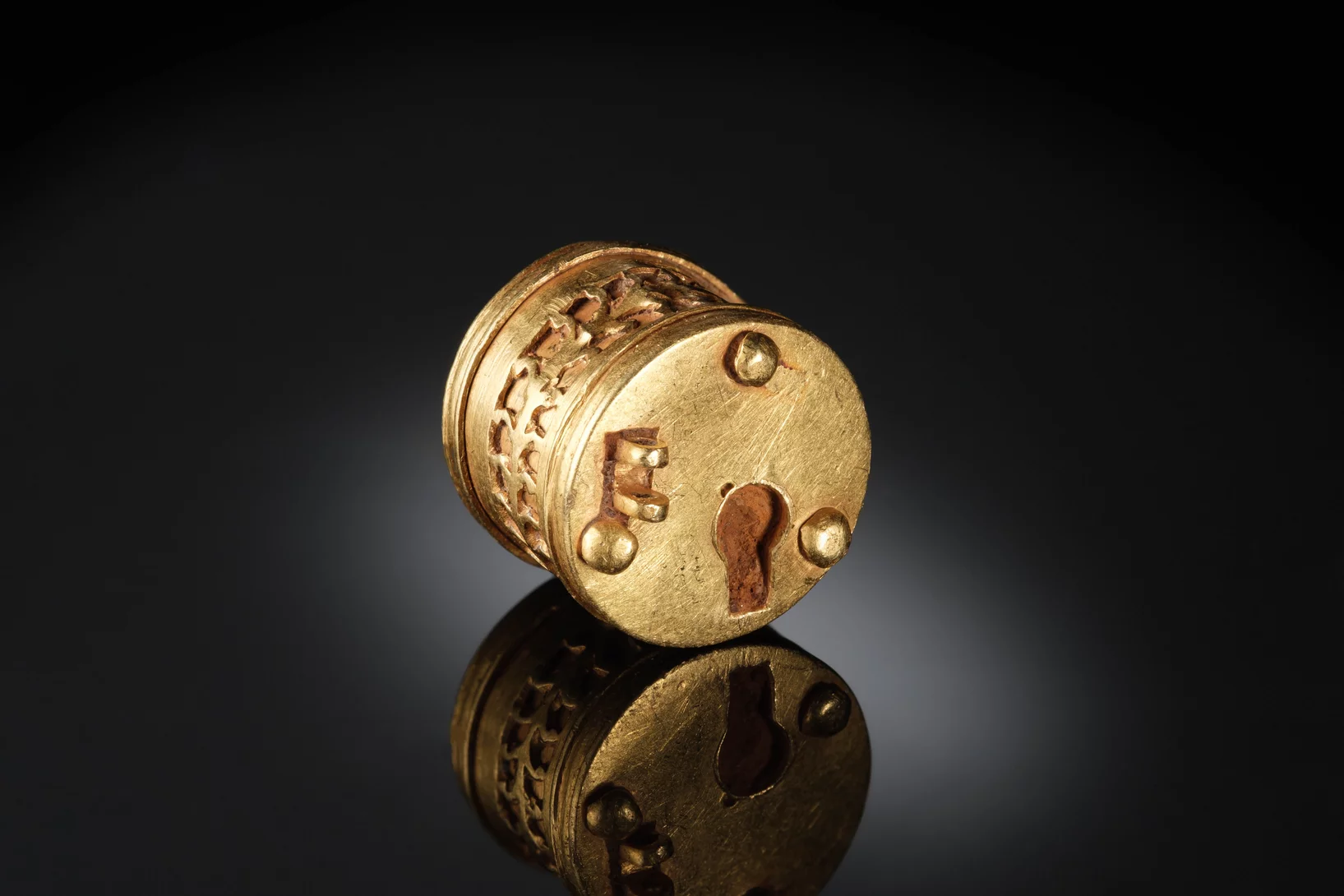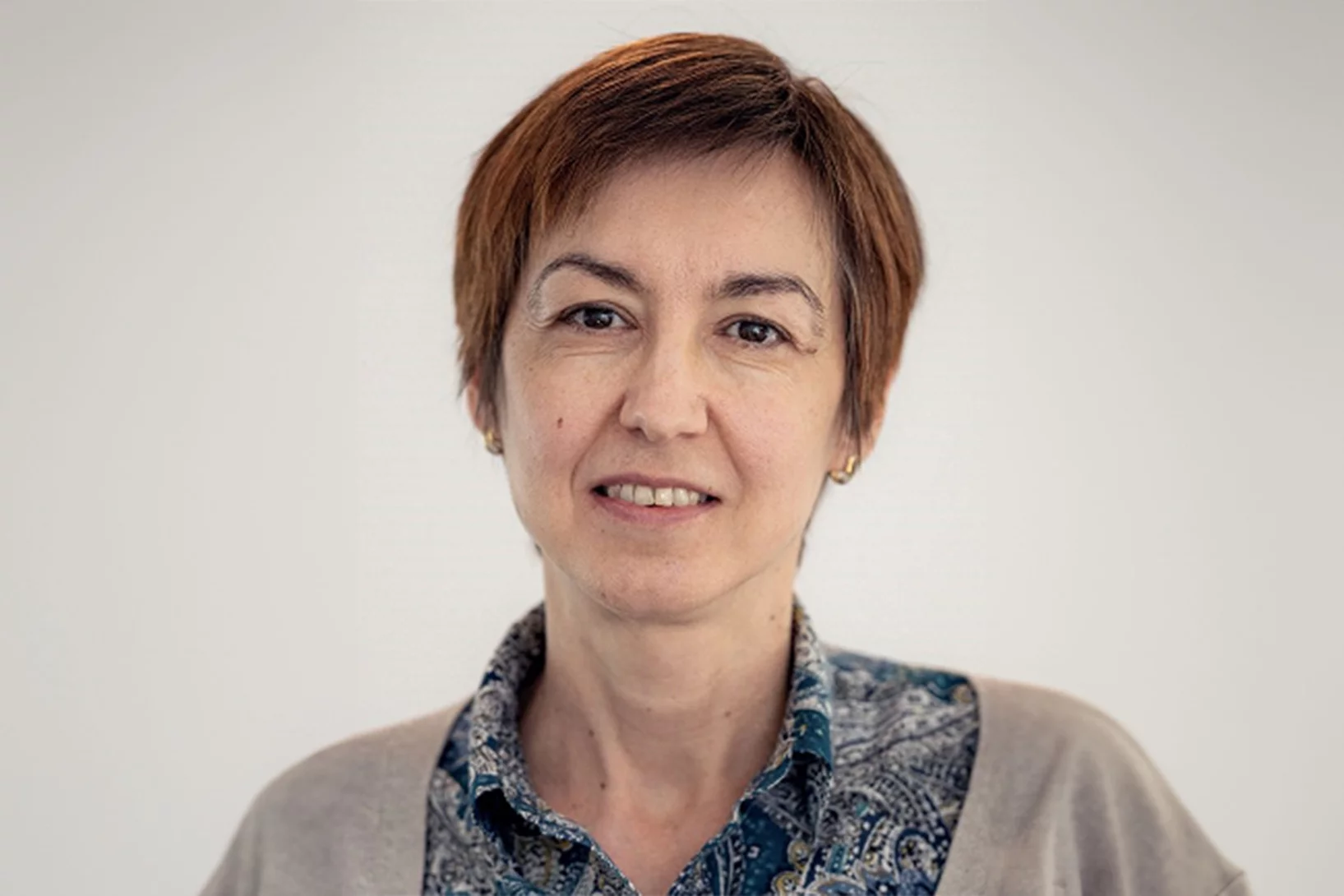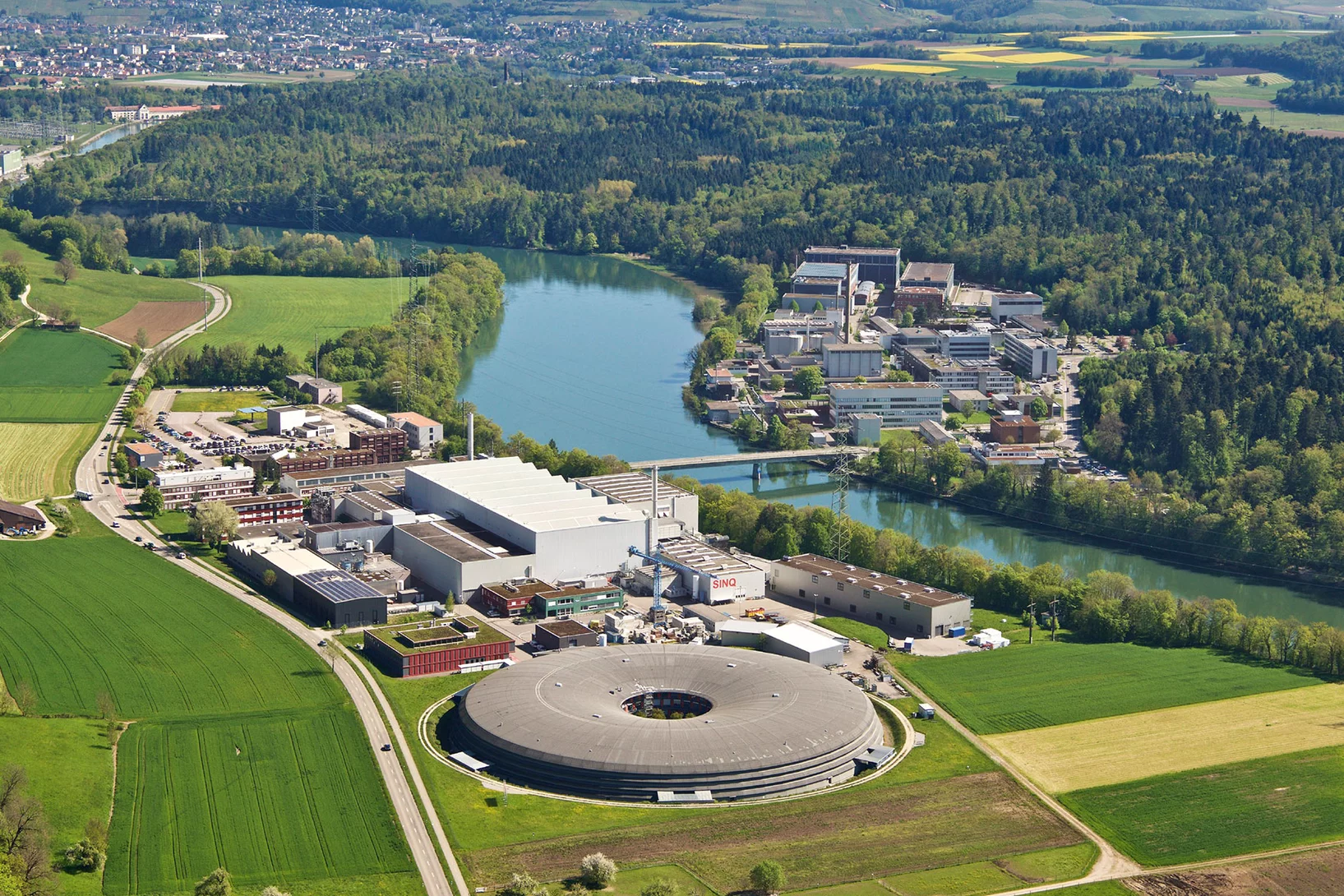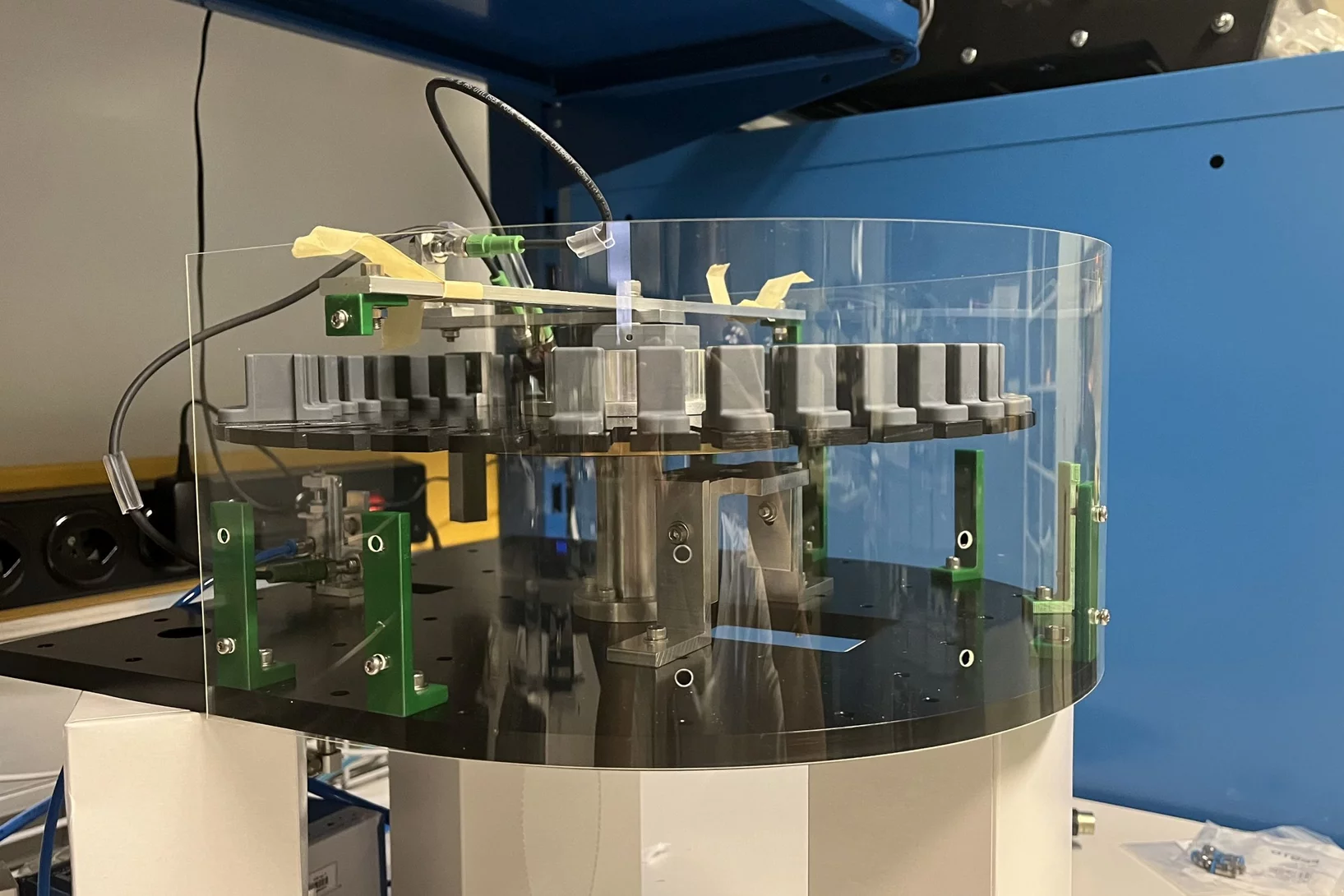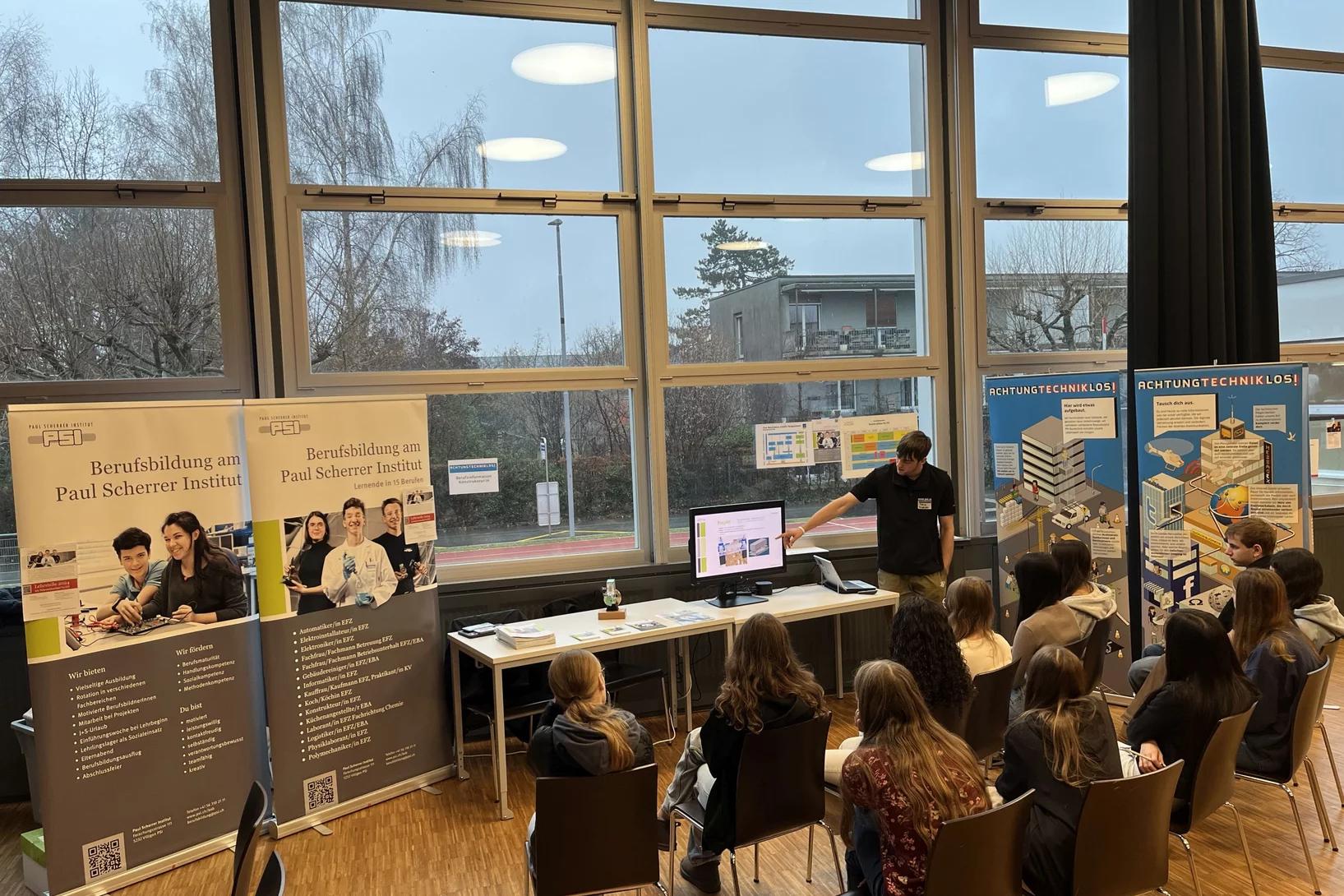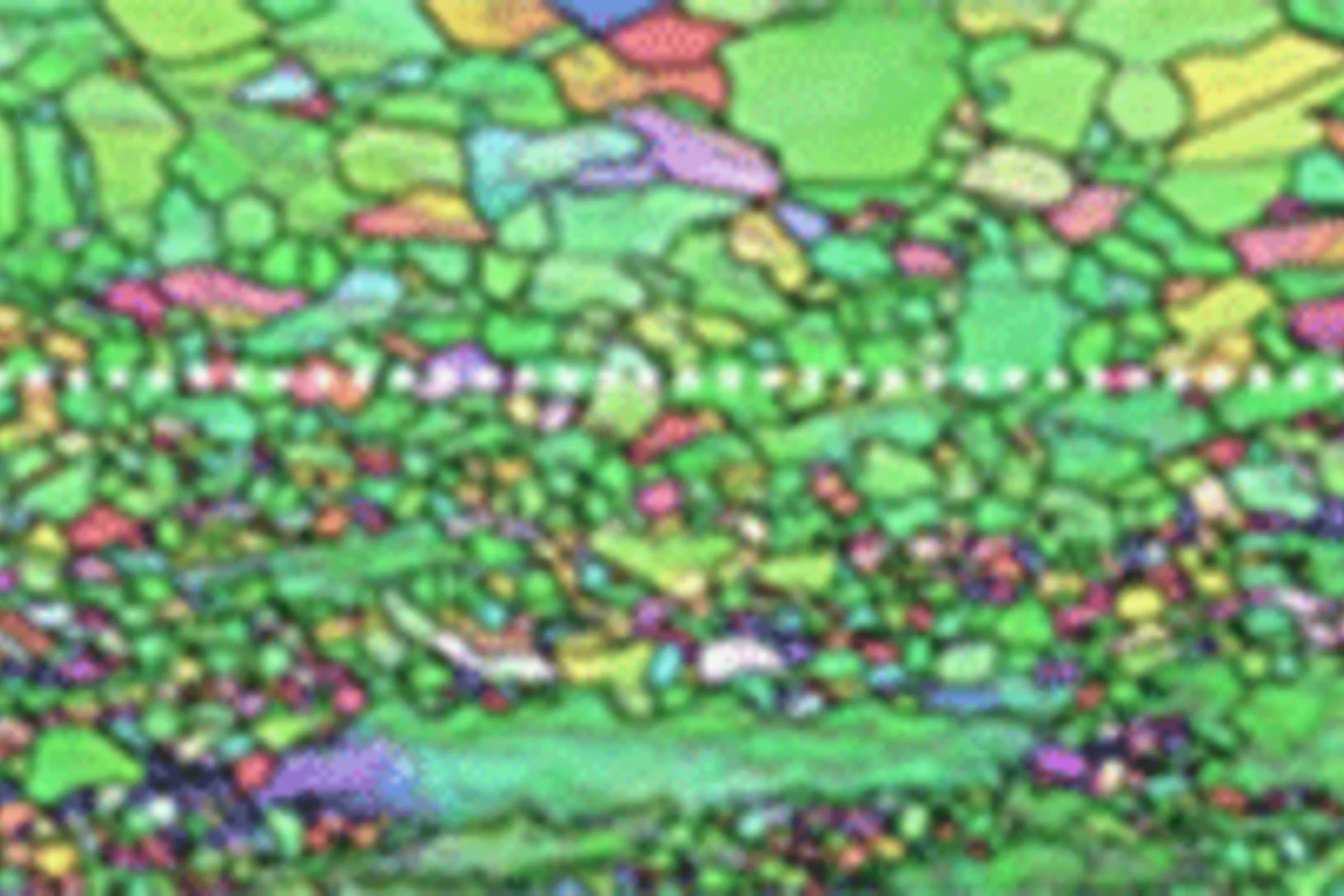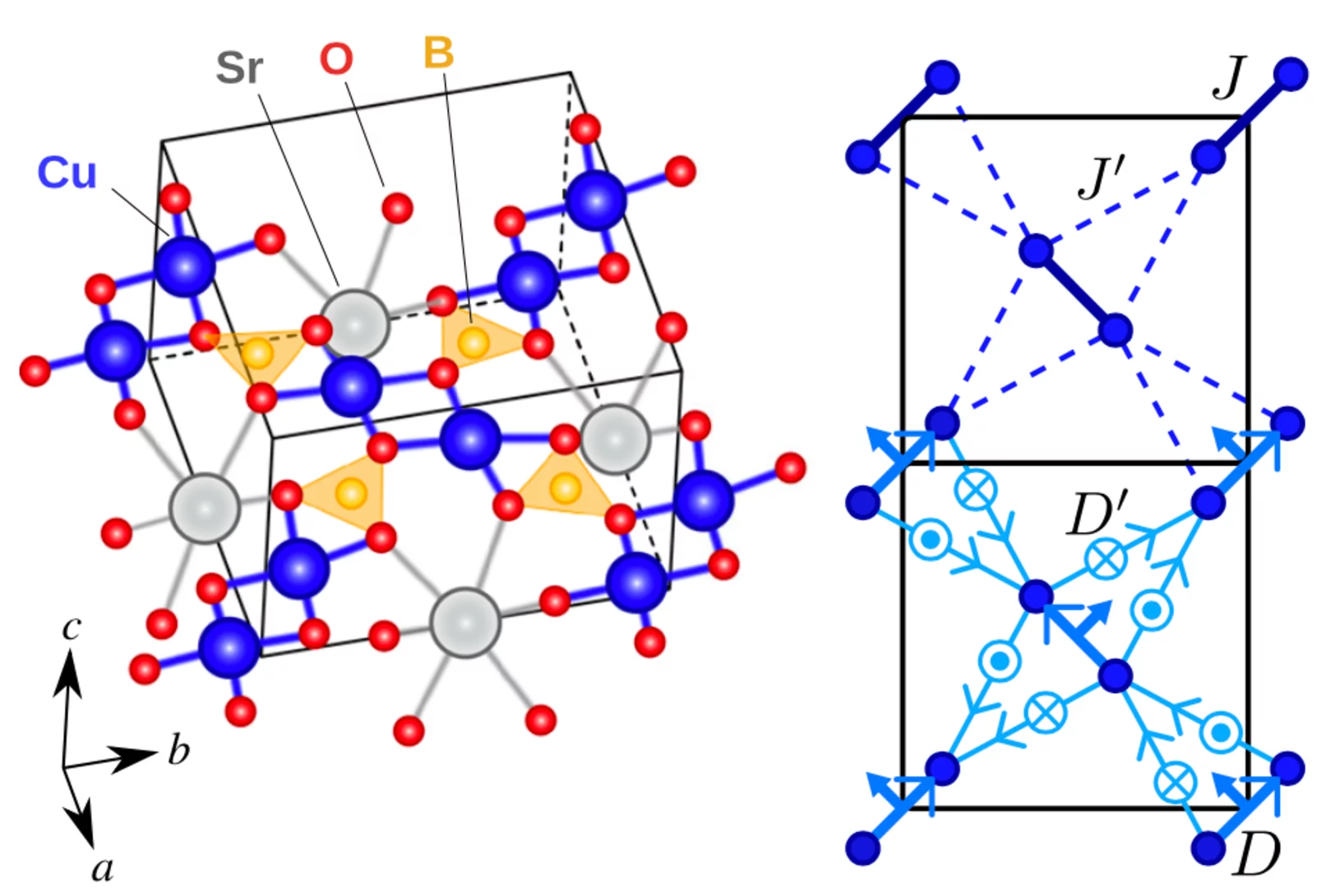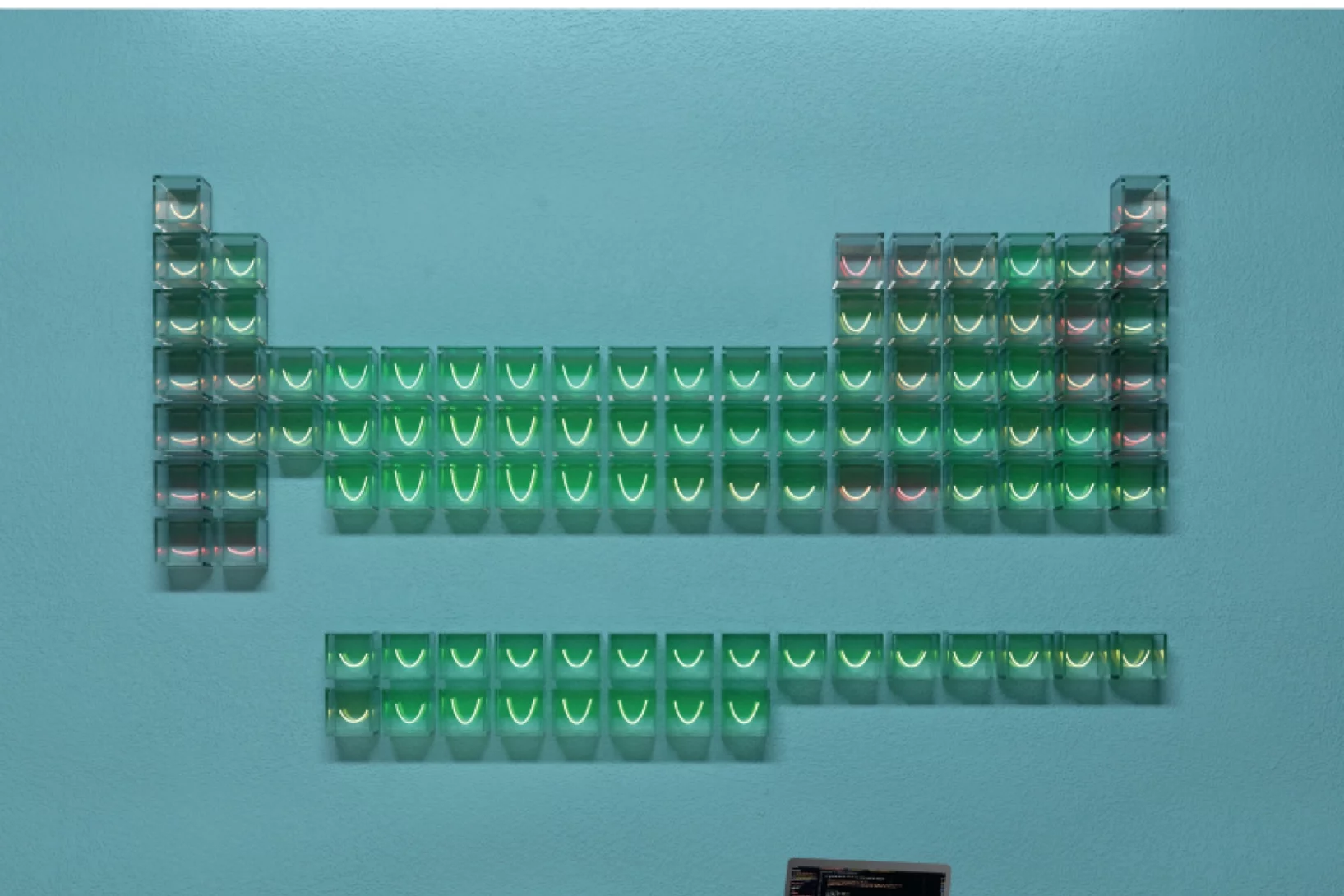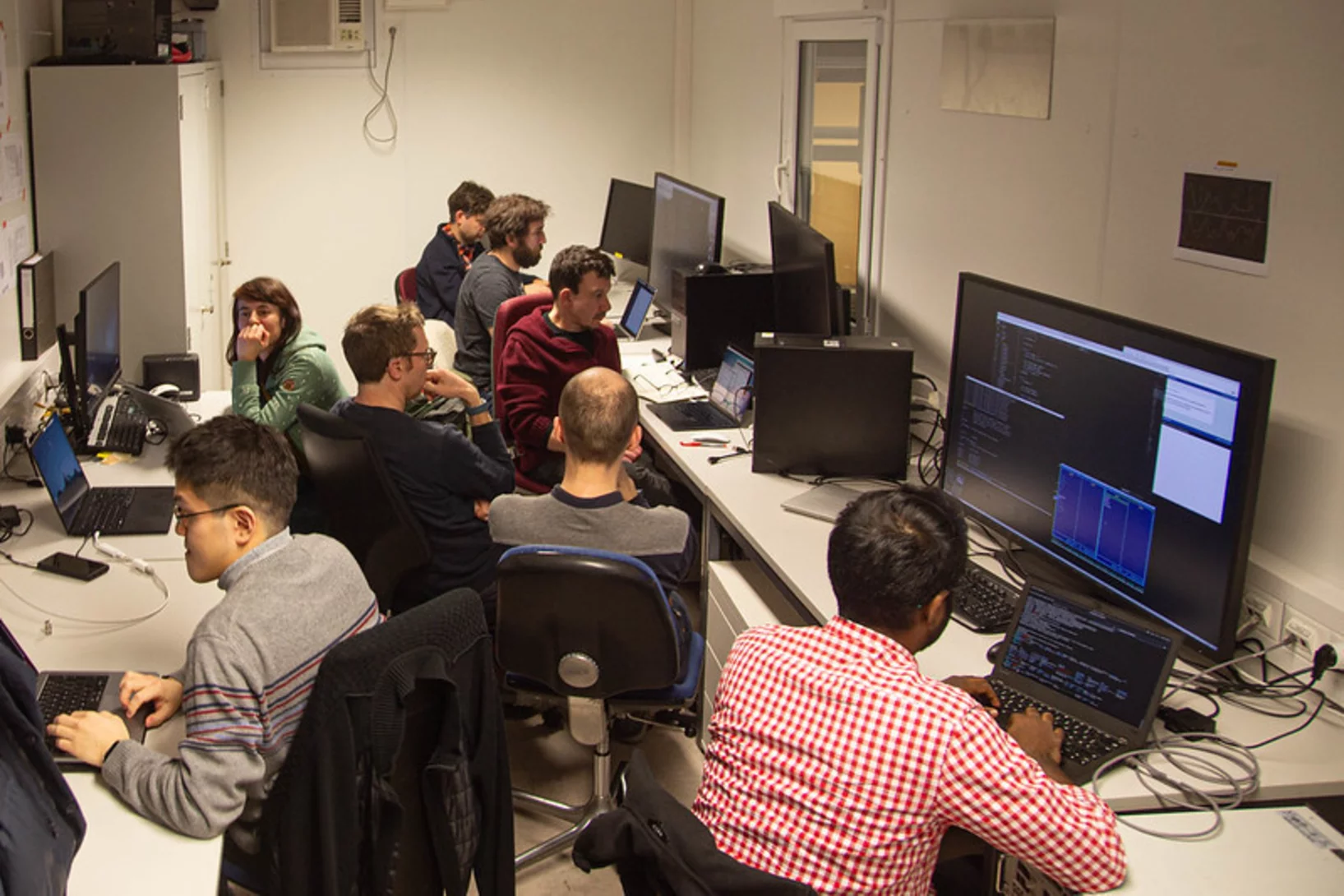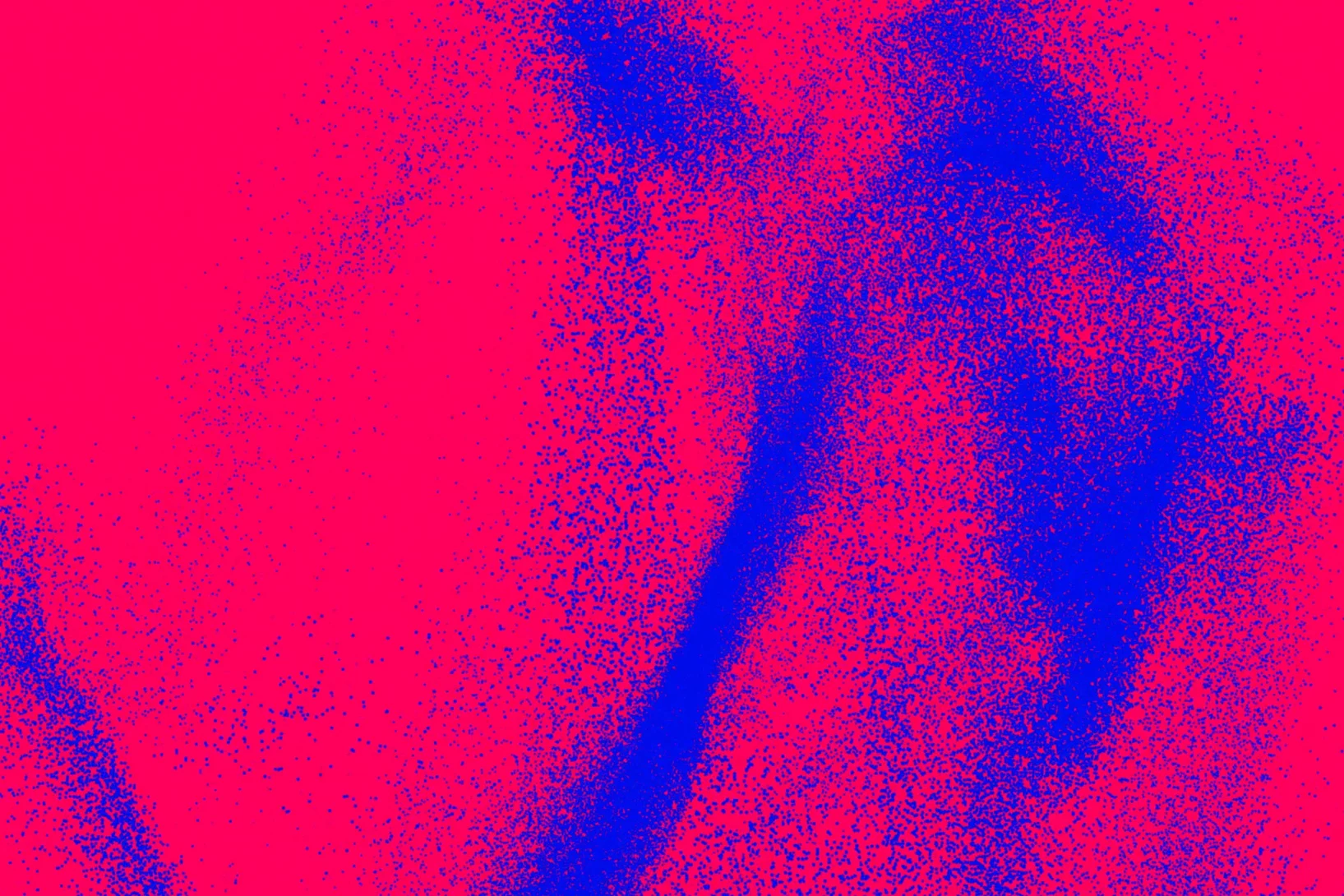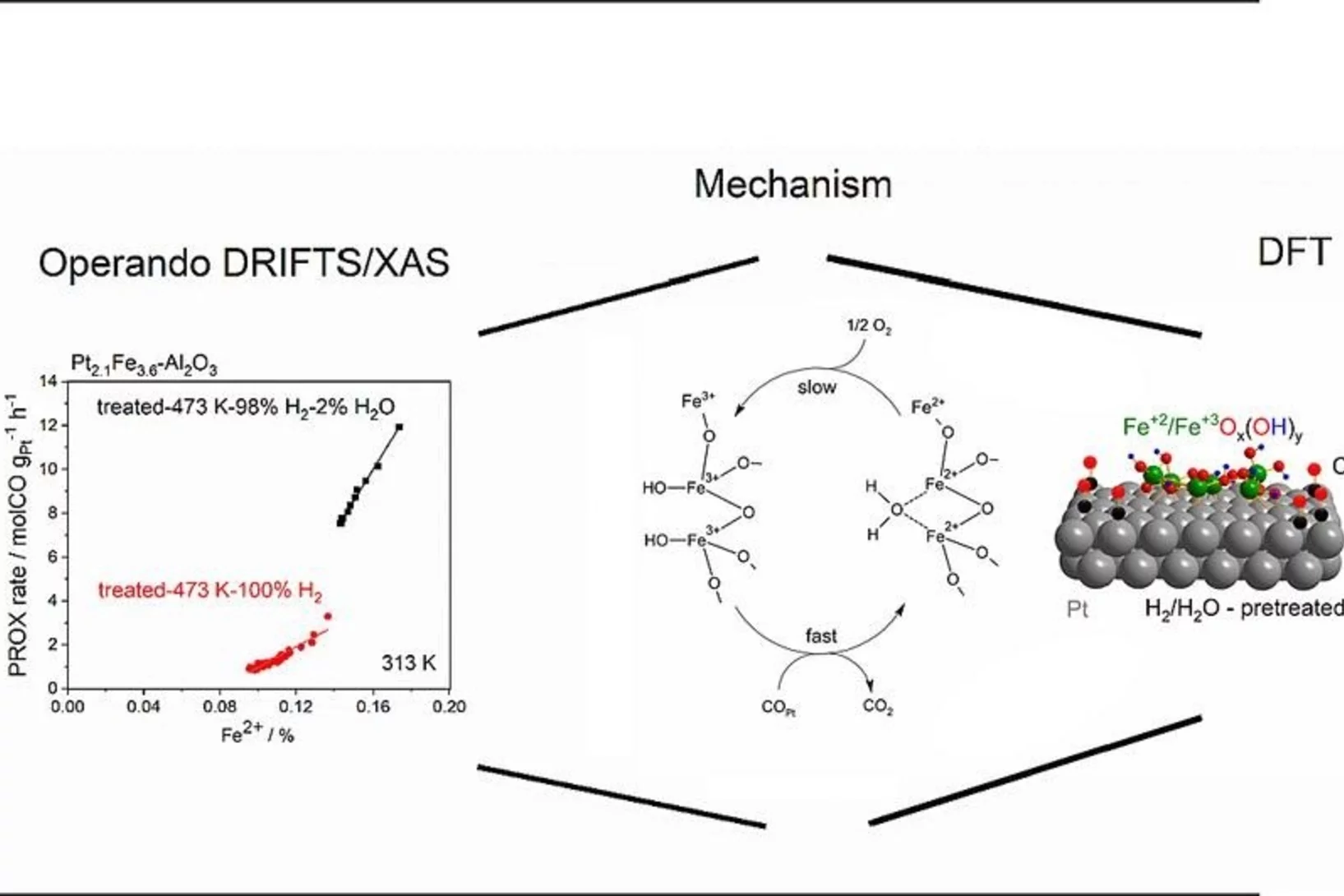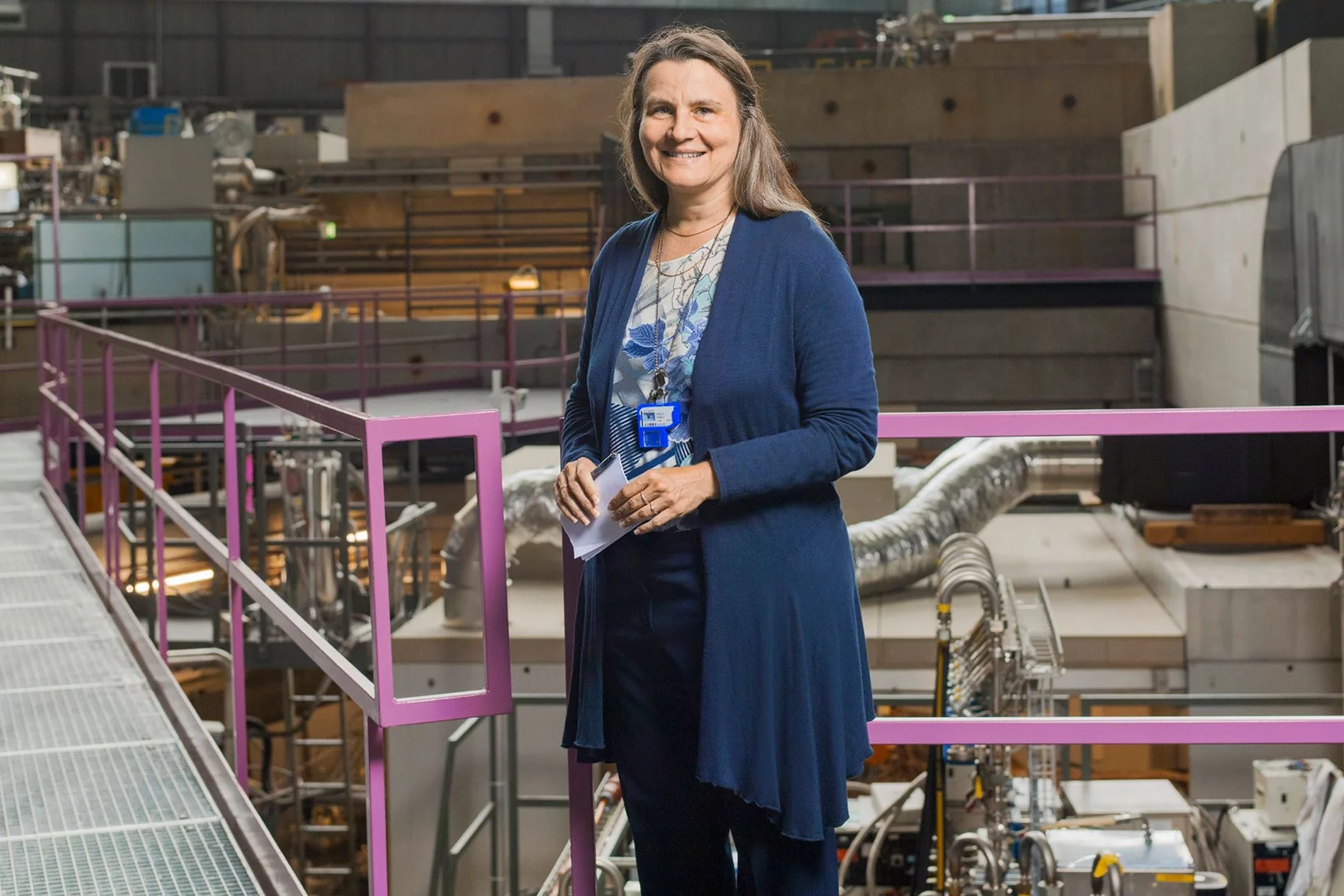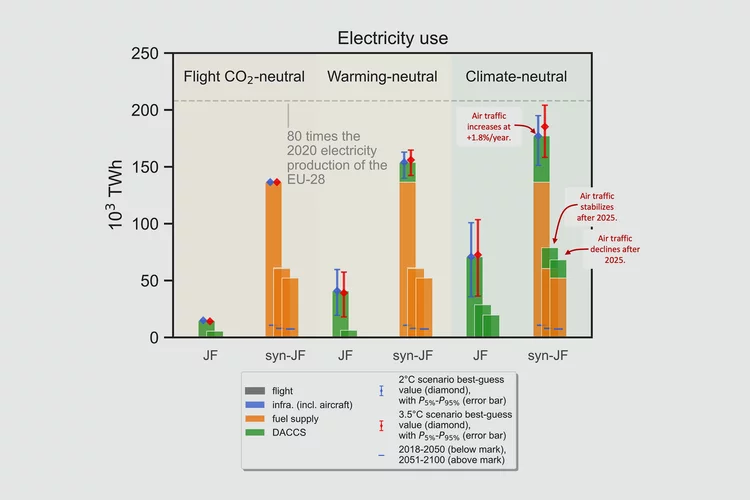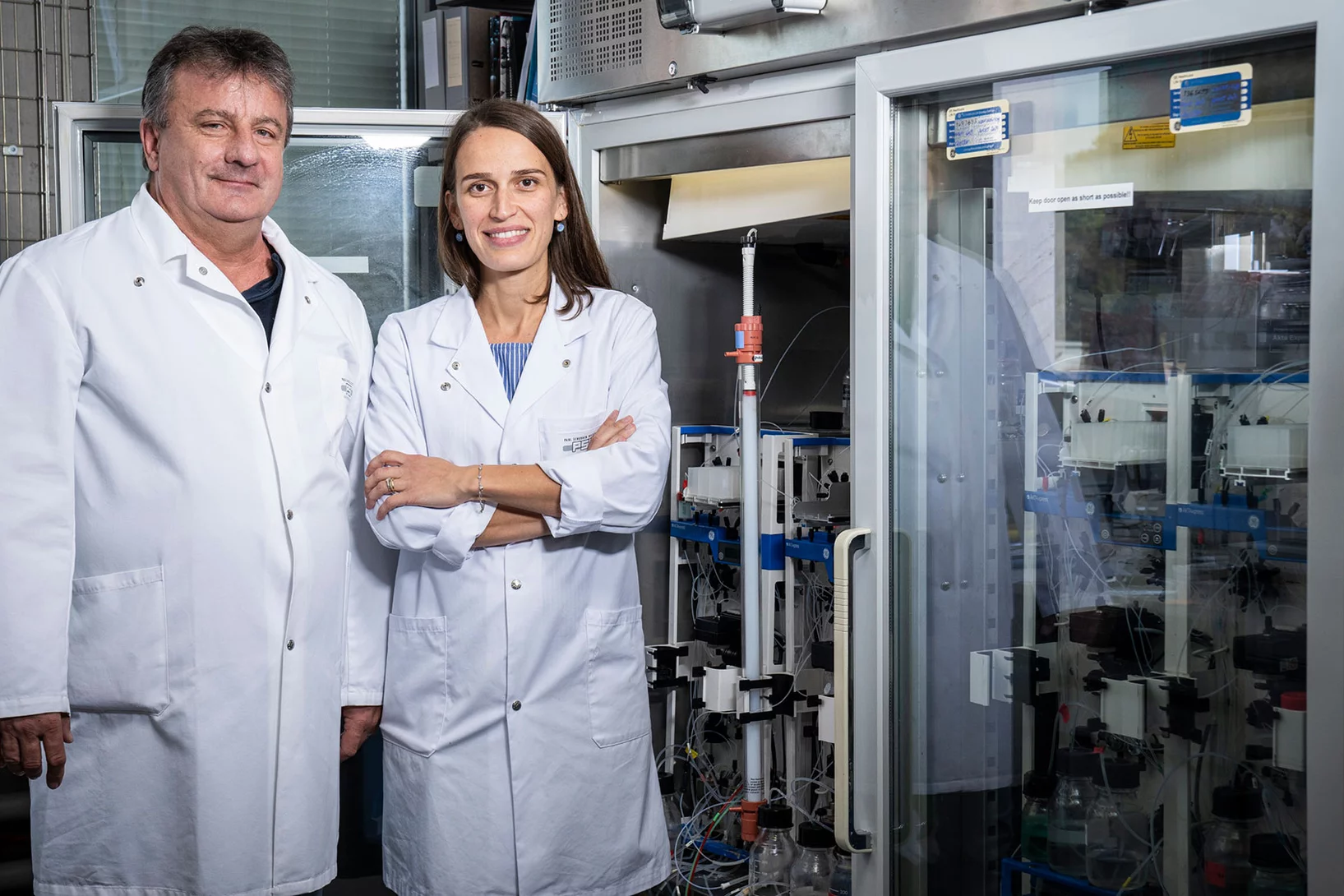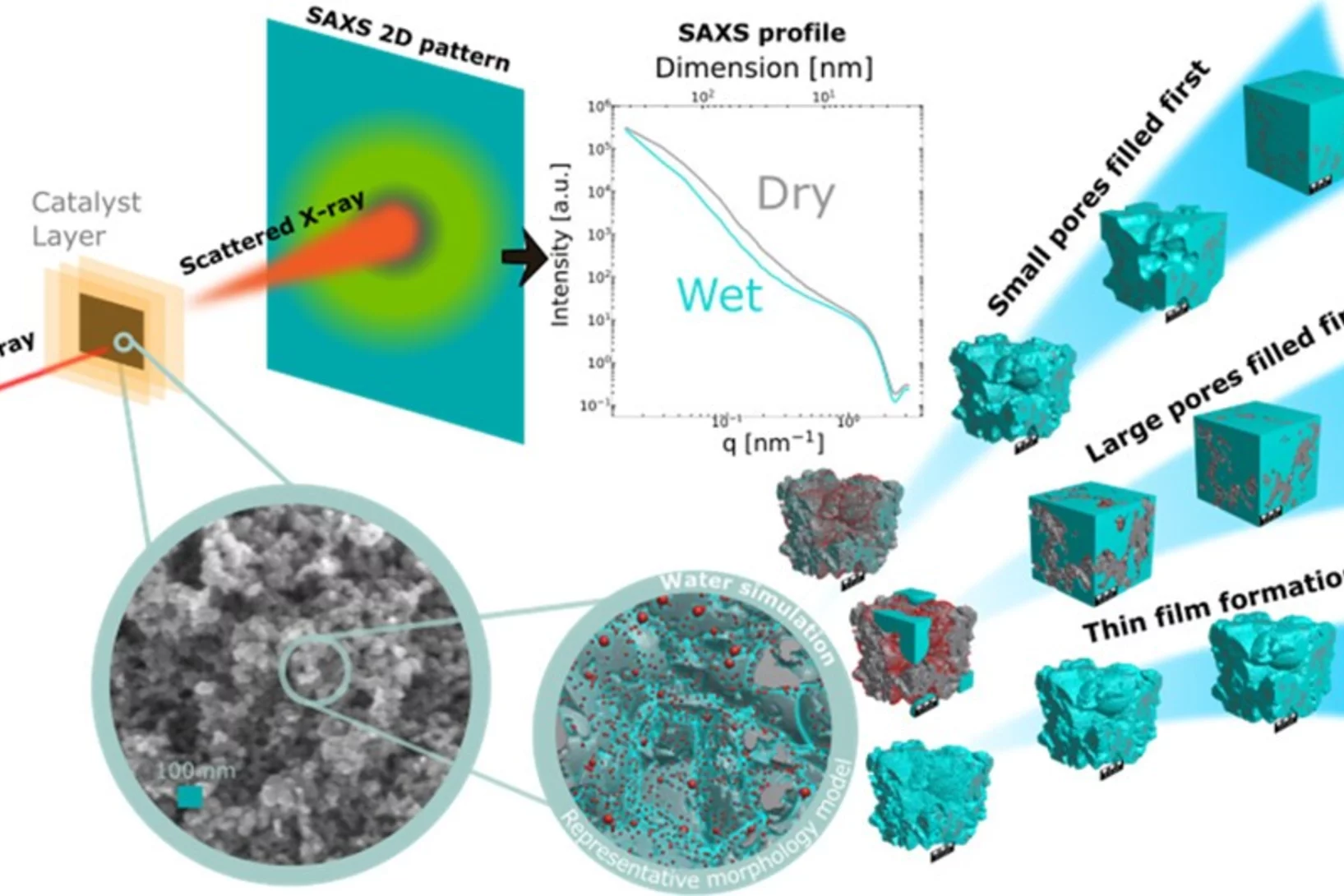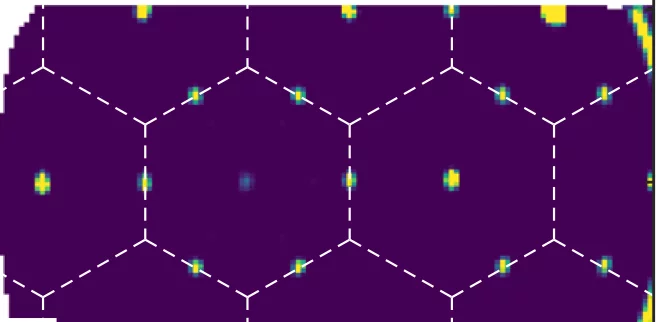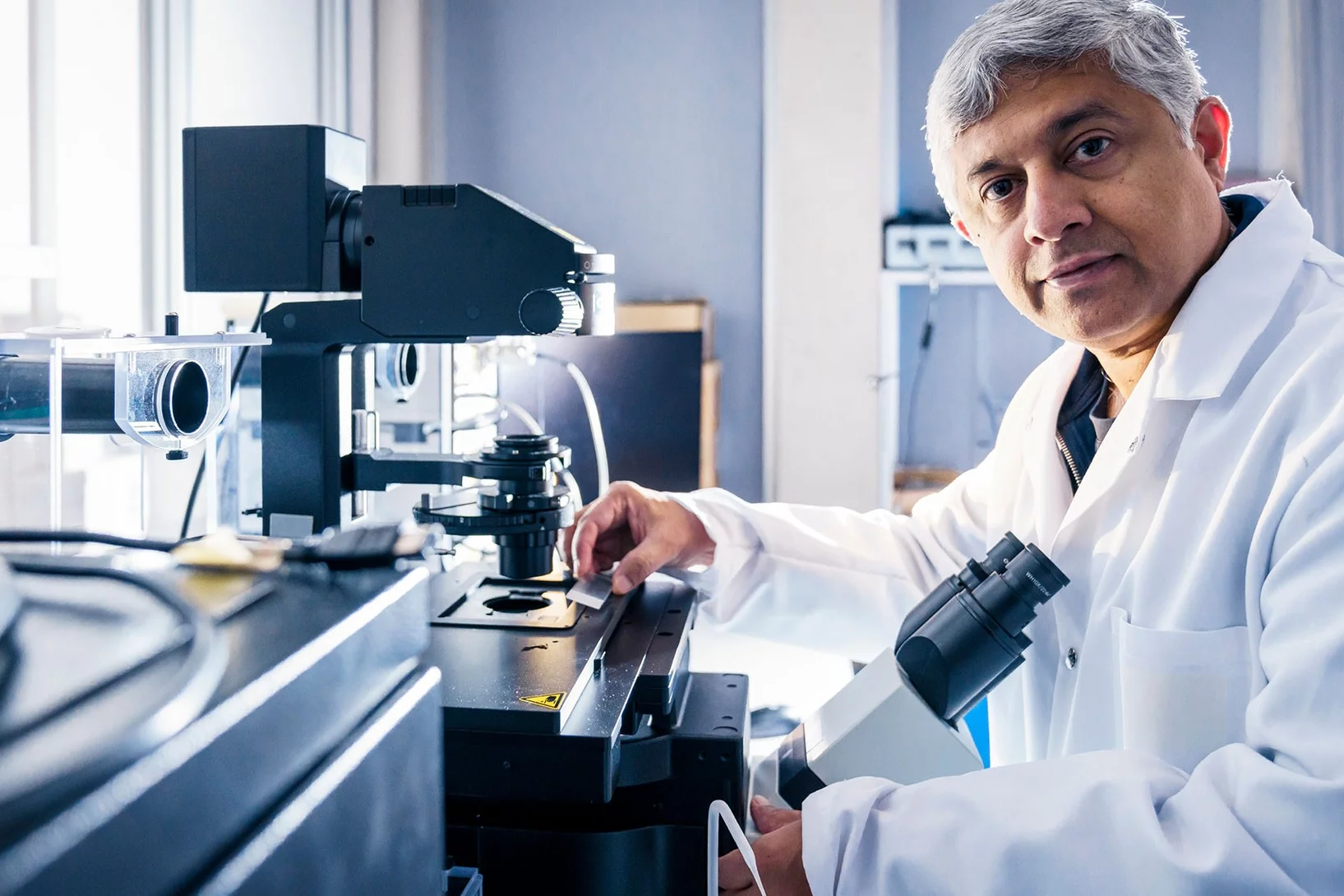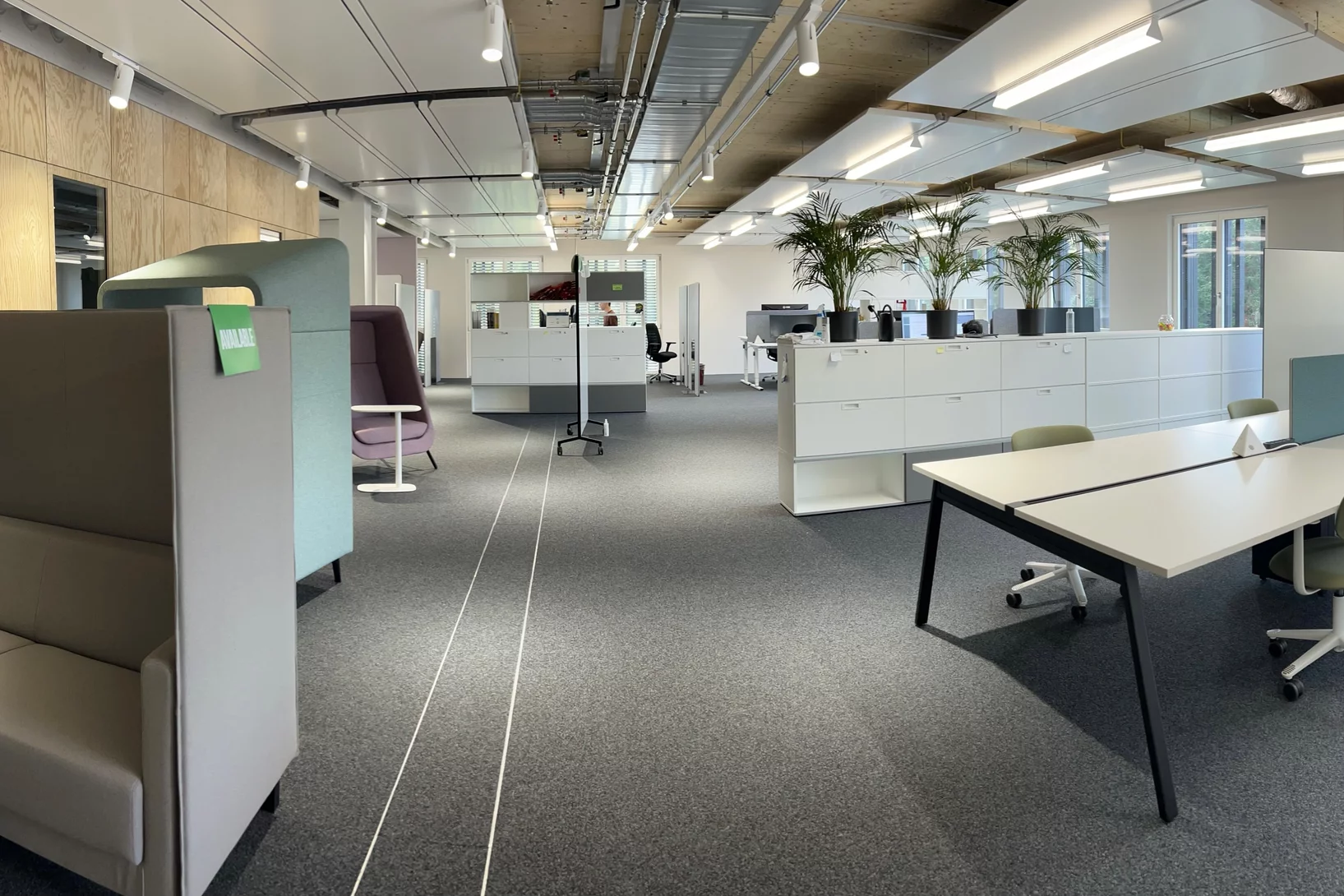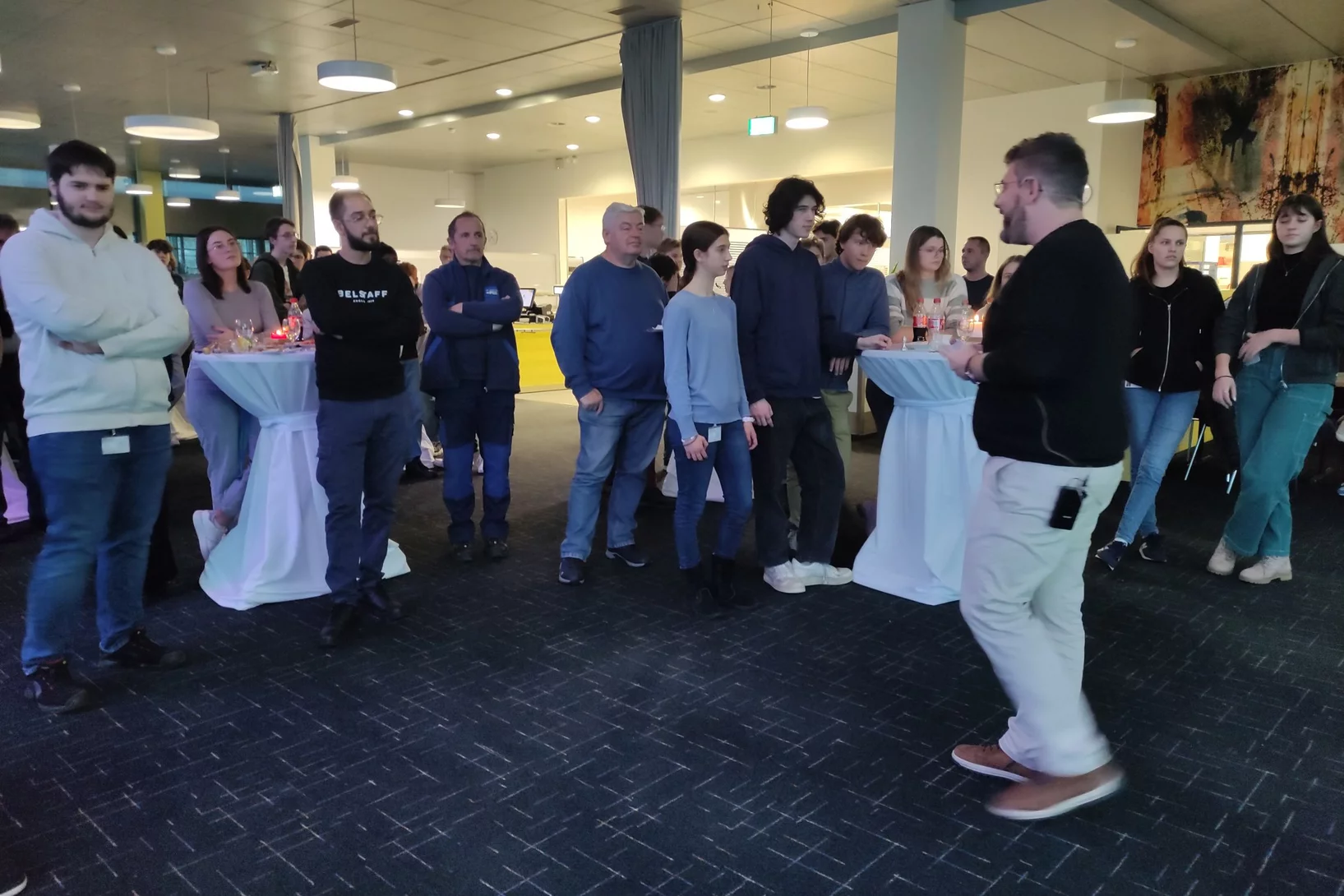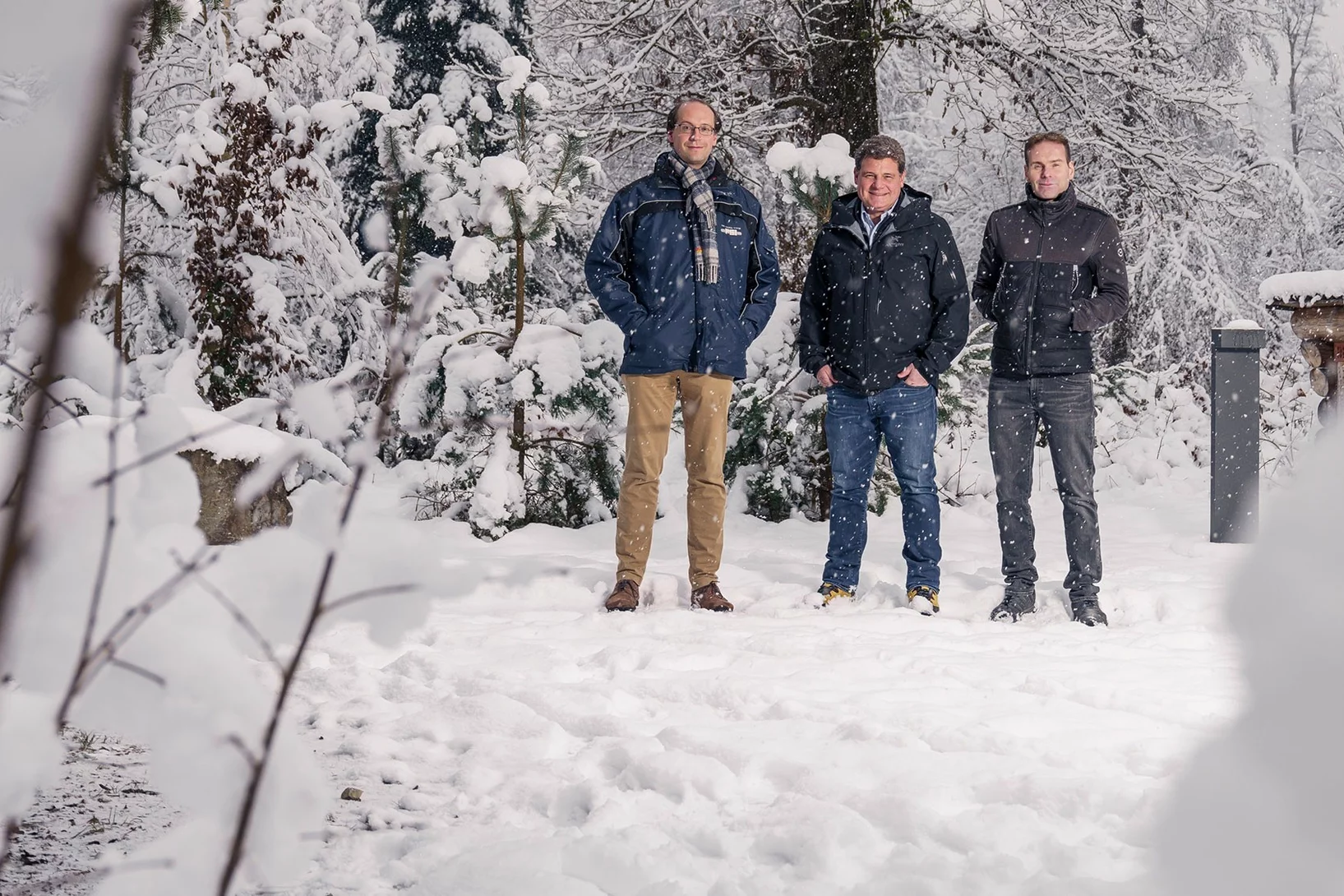Magnetostriction-Driven Muon Localization in an Antiferromagnetic Oxide
Magnetostriction results from the coupling between magnetic and elastic degrees of freedom. Though it is associated with a relatively small energy, we show that it plays an important role in determining the site of an implanted muon, so that the energetically favorable site can switch on crossing a magnetic phase transition. This surprising effect is demonstrated in the cubic rocksalt antiferromagnet MnO which undergoes a magnetostriction-driven rhombohedral distortion at the Néel temperature TN = 118 K. Above TN ...
First Light at MaxIV for SOPHIE
On January 23rd, 2024, first "Swedish" X-ray light was delivered to the SOPHIE endstation, currently installed at the SoftiMAX beamline of the MaxIV light source.
Closing event of the fourth round of feM-LEAD
Would you like to know more about the cross-institutional programme "Female Mentoring - Leadership for Equity And Diversity" (feM-LEAD)? Are you interested in the development of talents and equal opportunities in leadership positions? Would you like to know what the mentees have learnt and get to know more about their expertise and their work at PSI, Empa and WSL?
Then take part in the Closing Event and meet exciting individuals and ambitious talents!
Achieving ultra-low and -uniform residual magnetic fields in a very large magnetically shielded room for fundamental physics experiments
n2EDM is the current state of the art experiment carrying out a high-precision search for an electric dipole moment of the neutron at the ultra-cold neutron source of PSI. In order to reach it’s incredible precision of 10-27 e cm, a stable and uniform magnetic environment is critical. Thus, shielding the experiment from external magnetic flux and preparing a pristine magnetic environment is crucial. To achieve this, n2EDM uses both passive and active magnetic shielding components. External, or residual, magnetic field contributions must be near-zero, and can be achieved via “degaussing” the experiment’s passive magnetic shielding. Degaussing reduces, ideally “erases”, the residual magnetization of a material. In this work, we greatly improved the degaussing procedure of n2EDM, reducing the residual magnetic field by a factor of two, improving its uniformity, and all while taking less time and dissipating less heat.
LNS at the Highly Frustrated Magnetism conference 2024
Ilaria Villa, PhD student at LNS and LIN, represented our activities at the last conference on Highly Frustrated Magnetism held at the Indian Institute of Technology Madras, in Chennai (7-13 January, 2024). Ilaria received one of the best poster prices.
A precision mechanical masterpiece in miniature
With the discovery of a golden miniature box lock, an extraordinary and unique archaeological find was made in north-western Germany by a licensed detectorist.
The object represents an extremely reduced and valuable version of the provincial Roman box locks. These everyday objects were in general significantly larger and normally made either of iron, iron with silver or bronze bands or bronze.
Prof. Laura Grigori wins the SIAM Supercomputing Career Prize
Congratulations to Laura Grigori for being awarded the 2024 SIAM Activity Group on Supercomputing Career Prize in acknowledgement of her "outstanding contributions to scientific computing, particularly communication-avoiding algorithms".
Are you interested in working at the Scientific Computing, Theory and Data division at the PSI?
We invite you to join us at the Paul Scherrer Institute, one of Europe's premier multidisciplinary research centres. Since its establishment in 1988, PSI has been dedicated to advancing scientific discovery across various fields. The Scientific Computing, Theory and Data (CSD) division at PSI serves as the core of computational science and data analysis at our institute, playing an important role in supporting research across all scientific disciplines.
Solid-state qubits: Forget about being clean, embrace mess
So says new recipe for dense arrays of qubits with long lifetimes.
Referenzfolienwechsler im SLS
Projekt einer Physiklaborantin EFZ
Achtung Technik Los!
Ein Angebot, um dem Fachkräftemangel entgegenzuwirken, das PSI hilft mit!
Observing laser-induced recrystallization
Synchrotron X-ray diffraction sheds light on laser-induced local recrystallization .
Field-induced bound-state condensation and spin-nematic phase in SrCu2(BO3)2 revealed by neutron scattering up to 25.9 T
In quantum magnetic materials, ordered phases induced by an applied mag- netic field can be described as the Bose-Einstein condensation (BEC) of mag- non excitations. In the strongly frustrated system SrCu2(BO3)2, no clear magnon BEC could be observed, pointing to an alternative mechanism, but the high fields required to probe this physics have remained a barrier to detailed investigation.Here we exploit the first purpose-built high-field neutron scattering facility to measure ...
LMS paper featured on the cover of Nature Reviews Physics
Our paper "How to verify the precision of density-functional-theory implementations via reproducible and universal workflows" was featured on the January 2024 cover of the journal Nature Reviews Physics!
Second Mu3e Data Challenge at PSI
The Mu3e data challeneges aim at establishing the data processing and storage procedures as well as the online monitoring tools. To this end, we use simulated data to test all involved systems and further develop the code.
PSI alumni at our partner companies: Dr. Christian Bährle, ZEISS
The PSI Career Blog presents PSI alumni and their career paths, as well as the daily work and career perspectives at our partner companies. Today we get both combined: Christian Bährle worked in different places after his time at PSI, and provides an insight into his current position at ZEISS.
Highlights – PSI research in 2023
A look back over the past 12 months.
Water-assisted generation of catalytic interface: The case of interfacial Pt-FeOx(OH)y sites active in preferential carbon monoxide oxidation
Pt-FeOx(OH)y interface with enhanced activity for PROX is generated via strong metal-support interaction. Increase in the degree of hydroxylation of Pt-FeOx(OH)y interface enhances the rate of PROX mediated by active Fe2+ species.
Designing the stripe-ordered cuprate phase diagram through uniaxial-stress
Understanding the degree to which charge-stripe, spin-stripe, and superconducting orders compete/coexist is paramount for elucidating the microscopic pairing mechanism in the cuprate high-temperature superconductors. We explore the tunability of magnetism, superconductivity, and crystal structure in the stripe phase of the cuprate La2−xBaxCuO4, by employing complementary techniques under compressive uniaxial stress in the CuO2 plane. Our results show a sixfold increase ...
„IMPACT is very important in terms of international competition“
Daniela Kiselev talks about the upgrade planned at PSI's proton accelerator facility.
Climate-neutral aviation: will it fly?
The European aviation sector stands at a pivotal juncture in its quest to achieve net-zero climate impacts. Focusing on flight CO2 emissions overlooks up to 80% of the sector's climate repercussions.
Our research delves deep into the role of electricity-based synthetic jet fuels and direct air carbon capture and storage (DACCS) as potential game-changers. These solutions promise climate-neutral aviation, but there's a catch: the relentless rise in air traffic. Relying solely on renewables-derived synthetic fuels may strain both economic and natural resources. On the flip side, offsetting fossil jet fuel impacts via DACCS poses its own set of challenges. Our findings underscore one clear message: for a genuinely climate-neutral European aviation, we must reconsider the scale of air traffic.
New possibilities for a healing toxin
PSI researchers discover a surprising mechanism that could broaden the spectrum of therapeutic uses of botulinum toxin.
Quantification of PEFC Catalyst Layer Saturation via Small-Angle X‑ray Scattering
The complex nature of liquid water saturation in polymer electrolyte fuel cell (PEFC) catalyst layers (CLs) greatly affects the device performance. To investigate this problem, a method to quantify the presence of liquid water in a PEFC CL using small-angle X-ray scattering (SAXS) was developed in a collaboration of researchers of the Federal Institute for Materials Research and Testing (BAM, Berlin, Germany), the Photon Science Division and the Electrochemistry Laboratory of PSI. The method leverages the differences in electron densities between the solid catalyst matrix and the CL-pores filled with liquid water under dry and wet conditions, respectively.
Dichotomous Electrons: Travelling without Moving
Neutron scattering experiments give new understanding of how localized and free-flowing electrons collaborate to create material functionality.
Tetrahedral triple-Q magnetic ordering and large spontaneous Hall conductivity in the metallic triangular AFM Co1/3TaS2
The triangular lattice antiferromagnet (TLAF) has been the standard paradigm of frustrated magnetism for several decades. The most common magnetic ordering in insulating TLAFs is the 120° structure. However, a new triple-Q chiral ordering can emerge in metallic TLAFs, representing the short wave- length limit of magnetic skyrmion crystals. We report the metallic TLAF Co1/3TaS2 as the first example of tetrahedral triple-Q magnetic ordering with the associated topological Hall effect (non-zero σxy(H = 0)). We also ...
Enabling early detection of cancer
PSI researchers develop a fundamentally new method for early detection of cancer.
Phonon Topology and Winding of Spectral Weight in Graphite
The topology of electronic and phonon band structures of graphene is well studied and known to exhibit a Dirac cone at the K point of the Brillouin zone. Here, we applied inelastic x-ray scattering (IXS) along with ab initio calculations to investigate phonon topology in graphite, the 3D analog of graphene. We identified a pair of modes that form a very weakly gapped linear anticrossing at the K point that can be essentially viewed as a Dirac cone approximant. The IXS intensity ...
Welcome to the Science IT (AWI) Department New Workplace!
We are thrilled to welcome employees and guests to the Science IT area on the second floor of the new OBBA building. With its modern amenities and innovative design, this building serves as a testament to our commitment to fostering collaboration and creativity within the CSD division.
Jahresschlussapéro 2023
Jahresschlussapéro am 6. Dezember ohne «Samichlaus»
SwissFEL: a next generation tool for Attosecond Science
The 2023 Nobel Prize in Physics recognises attosecond science’s pioneers. Past and future, this field’s evolution is entwined with SwissFEL.

